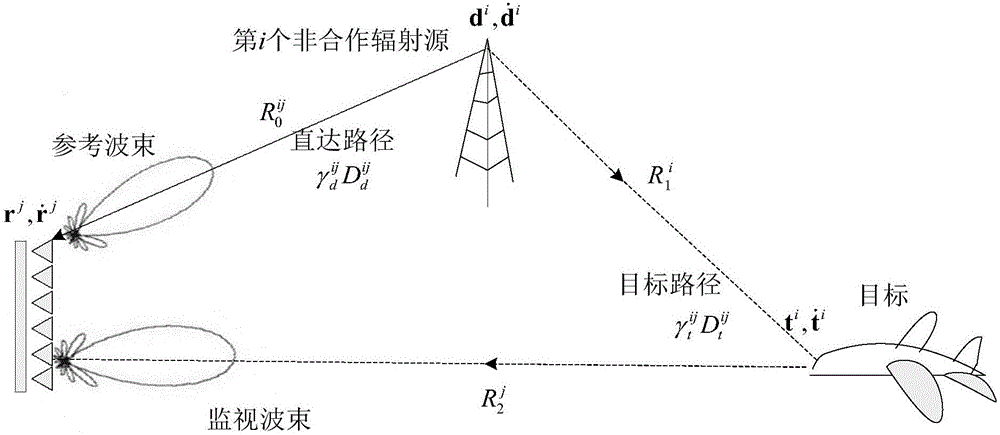Distributed passive radar target detection realization method
A passive radar, target detection technology, applied in radio wave measurement systems, radio wave reflection/re-radiation, measurement devices, etc., can solve the problem of multi-step iterative processing and time-consuming, improve target detection probability, save positioning Time and effect of stable target detection performance
- Summary
- Abstract
- Description
- Claims
- Application Information
AI Technical Summary
Problems solved by technology
Method used
Image
Examples
Embodiment Construction
[0025] The present invention will be described in further detail below in conjunction with the accompanying drawings.
[0026] Such as figure 1 As shown, the distributed passive radar system includes N t transmitters, which are also called non-cooperative radiation sources in the field of passive radar, N r receiver array, 1 target, where N t ≥2,N r ≥2.
[0027] Such as figure 2 As shown, the ij-th transmitter-target-receiver pair in the distributed passive radar system is also called the ij-th bistatic pair, and the position and velocity of the i-th transmitter are denoted as d i and i=1,...,N t , the position and velocity of the jth receiver array are denoted as r j and j=1,...,N r , while the position and velocity of the target are denoted as t and where d i , r j , t, are all functions of time. In general, the transmitter and receiver, and the target are moving. The distance from the i-th transmitter to the j-th receiver is Similarly, and rep...
PUM
 Login to View More
Login to View More Abstract
Description
Claims
Application Information
 Login to View More
Login to View More - R&D
- Intellectual Property
- Life Sciences
- Materials
- Tech Scout
- Unparalleled Data Quality
- Higher Quality Content
- 60% Fewer Hallucinations
Browse by: Latest US Patents, China's latest patents, Technical Efficacy Thesaurus, Application Domain, Technology Topic, Popular Technical Reports.
© 2025 PatSnap. All rights reserved.Legal|Privacy policy|Modern Slavery Act Transparency Statement|Sitemap|About US| Contact US: help@patsnap.com



